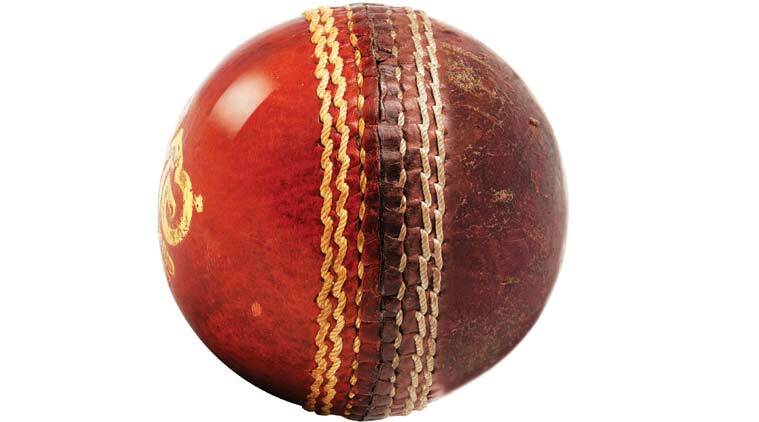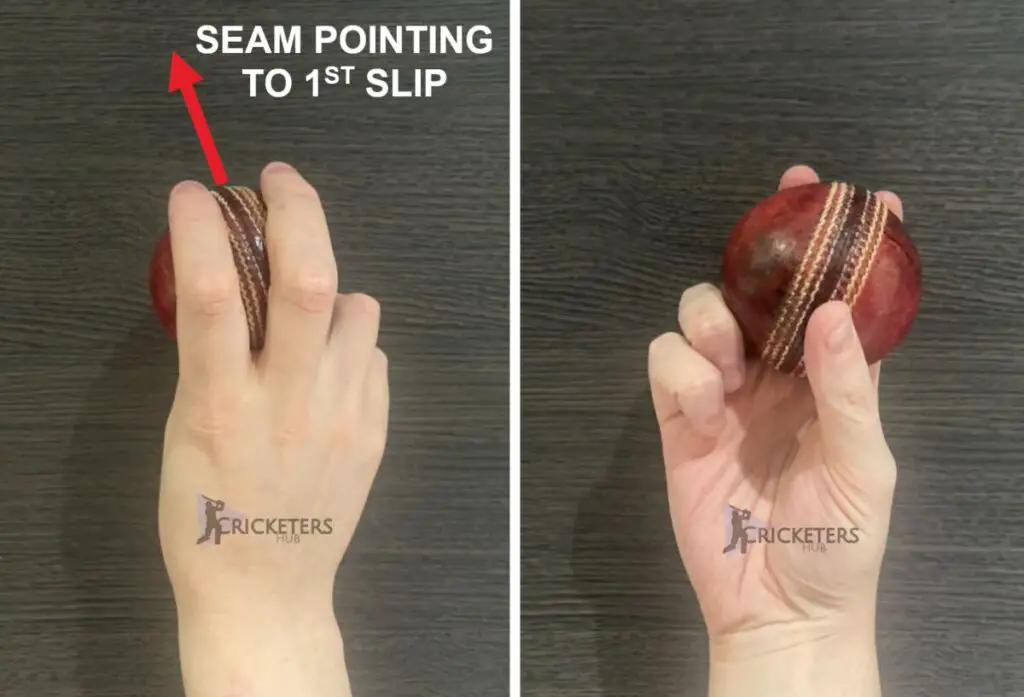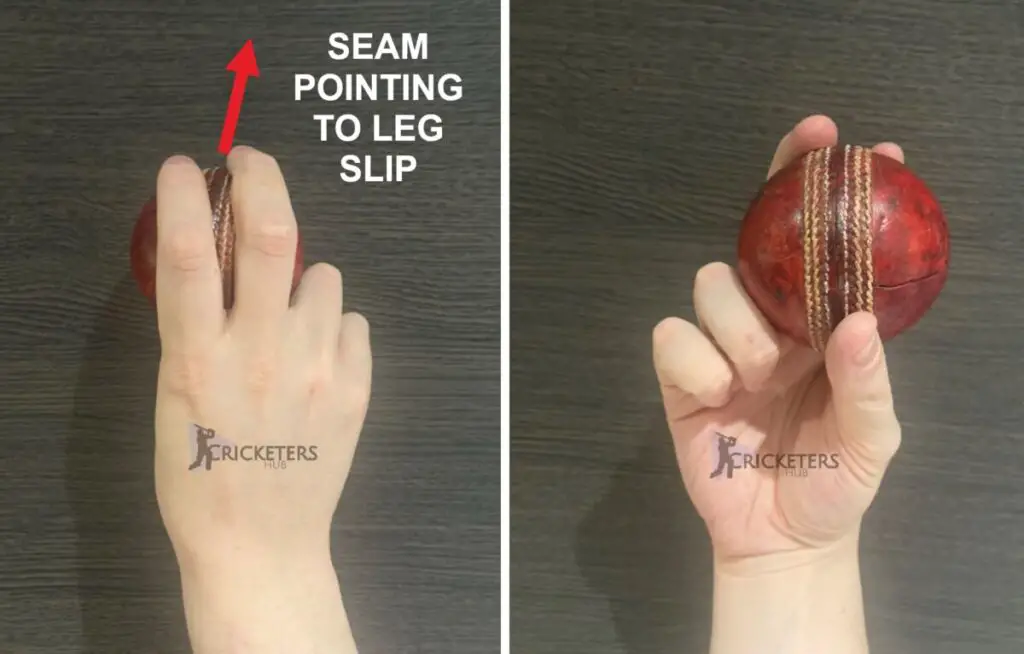Have you ever watched cricket and wondered how professional bowlers can use conventional swing to move the ball in both directions? If you have, then you’re in the right place. Most people who have watched cricket will know the name Jimmy Anderson. This English fast bowler is arguably the most skilful swing bowler of his generation. With no noticeable change in his action, he can swing the ball both into and away from the batsman’s pads at will. This makes it incredibly hard for batsmen to know which balls to play at, and which balls they can leave. Anderson has taken an incredibly large amount of the wickets in his career by exploiting this uncertainty in his opponents’ mind.
For people at a lower level of the game conventional swing can be a confusing thing, and even once it is understood, it’s still incredibly hard to control! With this post I hope I can dispel some myths about swing bowling, and teach you the basics that are required to be able to move the ball in the air effectively.
To get a cricket ball to swing, you’re going to have to take care of the following things:
- The Condition Of The Ball
- Your Bowling Action
- The Way The Ball Is Gripped
- Your Wrist Position & Release
In this post I’m going to take you through each of those thins in more detail, and I’ll also teach you how you can get the ball to swing later rather than early in its flight! Let’s get started…
The Condition Of The Ball
We’ve all seen cricketers rubbing the ball vigorously on their trousers during games. A casual observer watching this might wonder what on earth is going on! Well, it turns out that a cricket ball is ideal for swing bowling when it has one side that is shiny, and one side that is rough. With conventional swing, the ball will always move towards the direction of the rough side in the air, as the shinier side moves through the air quicker.
The ball condition should be an important focus for the fielding side. There are a few main things to remember when looking after the ball:
- Keep the ball as dry as possible. A wet ball is much harder to swing in the air.
- Always hold the ball with your fingertips on the seam. Do not place your palms on the side of the ball as this can add unwanted moisture.
- To shine the ball, apply a small amount of saliva to your fingertips and rub this on to the side of the ball you wish to keep shiny.
- Then, rub the shiny side of the ball on the back of your trouser leg, polishing the ball and providing a nice smooth finish.
- Ensure that the entire side of the ball is shiny. This includes all of the leather right up to the seam.
This process can help you swing the ball significantly more! Make sure the person in charge of looking after the ball has a good attention to detail!

Your Bowling Action
Many coaches believe that the bowlers’ action is one of the most important aspects of being able to bowl conventional swing. Many of them also believe that having either a ‘side-on’ or a ‘front-on’ action will mean that you are more likely to swing the ball one way rather than the other. This may be true, however it does not mean that you can’t learn to swing the ball the other way too.
In my own personal experience, my bowling action is quite front-on, and this seems to mean that I can bowl inswing without any great effort. However, I have also developed a way of bowling outswing too!
There are many professional cricketers who can swing the ball both ways accurately, and there are numerous more important factors that allow them to do this.
The Way The Ball Is Gripped
One of the more important factors behind your ability to swing the ball is the grip that you use. The way you grip the ball should be different depending on whether you are trying to bowl outswing or inswing. Let’s examine the two different grips in detail…
Outswing Grip (To a Right Handed Batsman)
- When picking up the ball, ensure that the rough side is on the left hand side, with the shiny side to the right.
- Hold the ball in the basic grip, and then tilt the seam 20 degrees to the left so that it now points in the direction of first slip.

Inswing Grip (To a Right Handed Batsman)
- When picking up the ball, ensure that the rough side is on the right hand side, with the shiny side to the left.
- Hold the ball in the basic grip, and then tilt the seam twenty degrees to the right so that it now points towards fine leg.
Note: For outswing/inswing to a left handed batsman, simply reverse the direction of the ball in the hand.

Your Wrist Position & Release
The position of the wrist is always very important to both conventional swing and seam bowlers. When delivering the ball, you should always be aiming for the seam to be upright when it hits the pitch, as this gives you the best chance of getting lateral movement and hopefully getting the batsman back in the pavilion. The best way to do this is to ensure that the wrist is fully upright and behind the ball during the delivery. If the wrist is not behind the ball, this can cause the seam to wobble, which is not always ideal if you want to get movement in the air and off the pitch.
Ok, so now we know why correct wrist position is important, how do we achieve it? Andrew Flintoff (a seam bowler) adopted the method of keeping the wrist locked in the desired position throughout his entire run up and delivery stride. In my personal experience, this is definitely something that has worked for me. Holding the wrist in this position while running in to bowl helped to ingrain the wrist position in my muscle memory, and the more and more I practised this in the nets, the more it started to feel natural.
When we look at swing bowling, the principle is exactly the same as with seam bowling. The wrist must be fully behind the ball as it leaves the hand. For best results, you must cause the ball to spin along its axis, with no wobble in the seam as it travels towards the batsman.
Jimmy Anderson believes there’s a very easy way to learn how to do this, and it doesn’t involve changing your wrist position at all, it just requires you to change how you release the ball…
Outswing
For Jimmy’s outswinger, he will hold the ball in the outswing grip, run up and go through his delivery stride as normal. However, when the ball is about to leave the hand, he will ensure the last finger that touches the ball is his index finger. With the last bit of momentum being applied to the ball by this finger, this causes the seam to rotate in the direction of first slip, making it more likely to swing away from the batsman.
Inswing
When bowling the inswinger, Jimmy’s process is largely the same. He holds the ball with the inswing grip, goes through his run up and delivery stride and then prepares to release the ball. This time, when the ball leaves his hand, he will make sure that it leaves his middle finger last. The momentum imparted by the middle finger causes the seam to rotate in towards the batsman, making the ball more likely to swing towards his pads.
How Can You Get The Ball To Swing Later?
Ok, so now we’ve highlighted the basics that you need to be able to bowl conventional swing, how do we refine it and make it even more effective?
One thing that a lot of elite bowlers try to work on is how late they can get the ball to move in the air. Skilled batsmen will read the ball out of the bowlers hand expertly, and keep their eye on the ball until it makes contact with their bat. Therefore, if the ball starts to swing as soon as it begins its flight, this is a lot easier for the batsman to see and react to as he can follow the trajectory the whole way. An example of a bowler who uses conventional swing to move the ball very early is David Willey of England. He doesn’t possess great pace, and the movement he gets in the air is largely easy to read. This is one of the reasons why he may never make it as a test match bowler.
Contrast this with bowlers like Dale Steyn of South Africa or Mohammad Amir of Pakistan. At the top of their game, these two can be nearly unplayable due to their pace, accuracy, and their ability to swing the ball very late. Although sometimes it may not look as if they move the ball as much as someone like David Willey, the late swing gives the batsman less time to react to the movement, meaning that a good ball is more likely to take the edge. When you add this to the fact that these two are capable of swinging the ball both ways, you can begin to understand what sort of problems they cause.
There are various thoughts from coaches and professionals on how to achieve late swing more consistently. Here are a couple to cast your eye over:
Having a High Arm
There is a school of thought that the key to making conventional swing happen later is being very upright in your action, and staying very tall as your bowling arm comes over in a relatively straight line. This is what is meant by having a ‘high arm’. This means that there is more momentum directly behind the ball as it begins its journey through the air, and the swing will often occur later in the flight. Again, Jimmy Anderson and Dale Steyn are excellent examples of this.
The opposite of this would be having a ‘round arm’ action, and a good example would be Matthew Hoggard. He wasn’t a bowler who stood very tall during his delivery stride, and therefore the rotation of his bowling arm never came through in a very straight line. This means that the ball is pushed down the pitch at a slightly more off-centre trajectory than it is with a high arm bowler, and is more likely to experience conventional swing straight from the hand.
Seam Position
Some people believe that late swing will occur more often if you hold the ball in a slightly different way to the outswing and inswing grips that I showed you above. Instead some bowlers prefer not to turn the ball as far first slip (for the outswinger) and fine leg (for the inswinger) in the hand, and would rather use the basic grip with only a slight tilt of the seam.
Final Things To Remember
Keep in mind that sometimes the amount of swing achievable can be limited by the conditions and the length that you bowl. When watching a game of cricket you will often hear a commentator say that ‘the conditions are perfect for swing bowling’, which often refers to the weather being slightly overcast. Simply put, some days the ball will swing more than others for reasons that are out of the players’ control.
As for the length you should be bowling, trying to get the batsman to come forwards and play on the front foot is a vital component of effective swing bowling. This means that the ball will be in the air longer and therefore it will have more chance to move around!
Lastly, with this post I have tried to highlight the main principles to help you impart conventional swing onto a cricket ball. However, this should not become more important than what you feel is comfortable for yourself. The beauty of cricket is that there are so many different techniques and ways of getting the job done. There is no single correct way! Take my post as a guide, find something that works well for you, and you shouldn’t go far wrong!
If you want to read more tips on fast bowling, then click here to read one of my most detailed posts on the subject! It will help you improve your speed, you accuracy, and your variation deliveries as well as other things!
